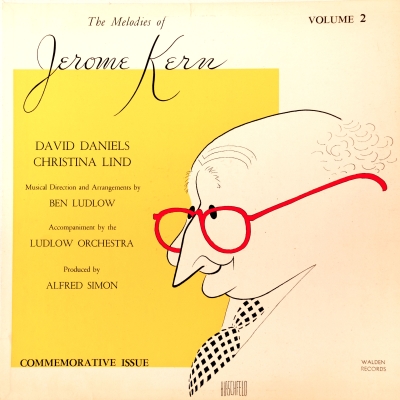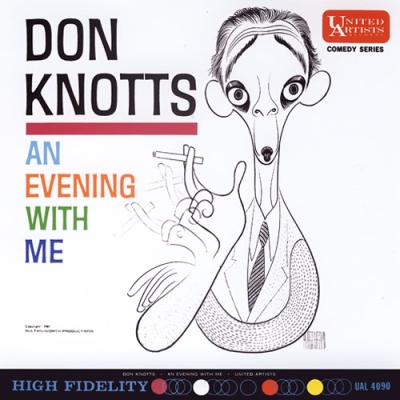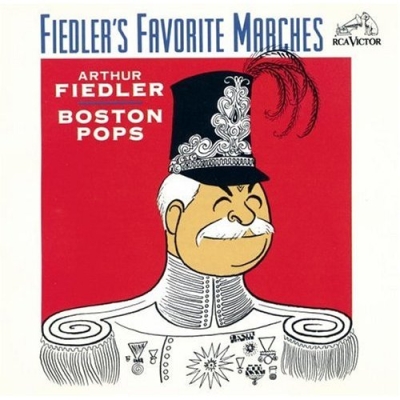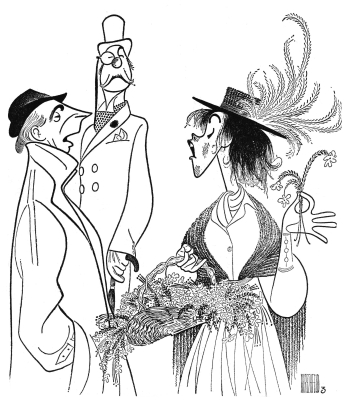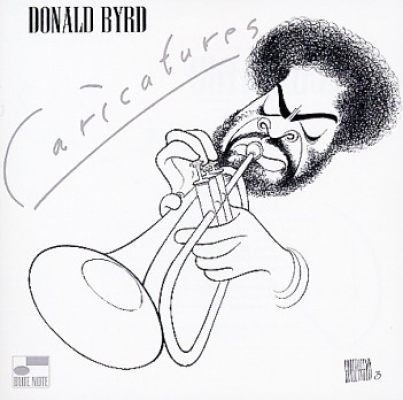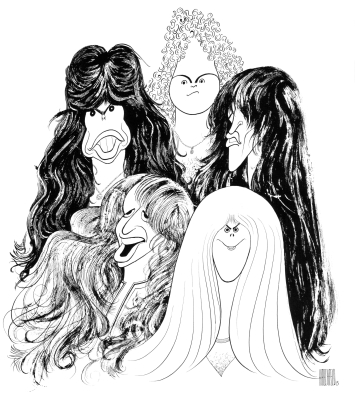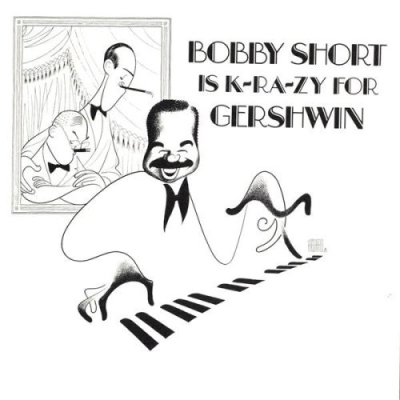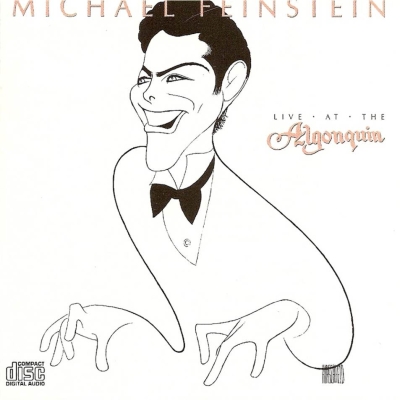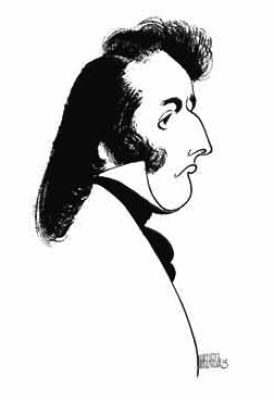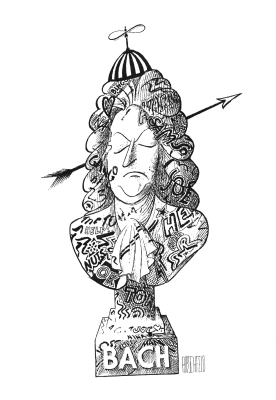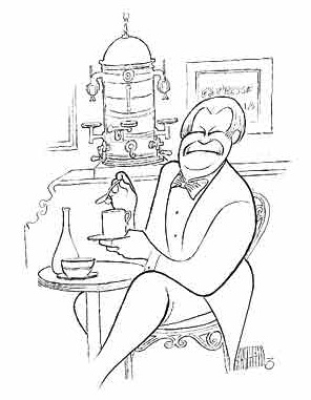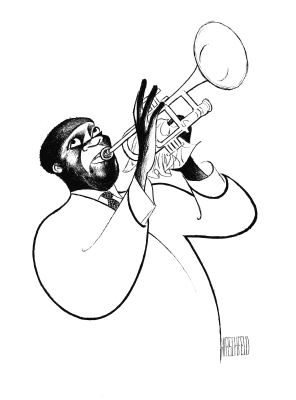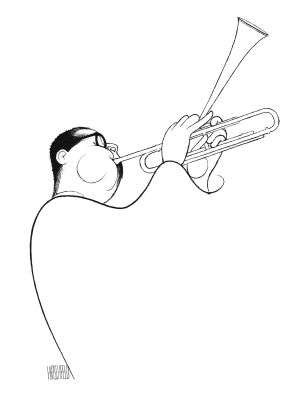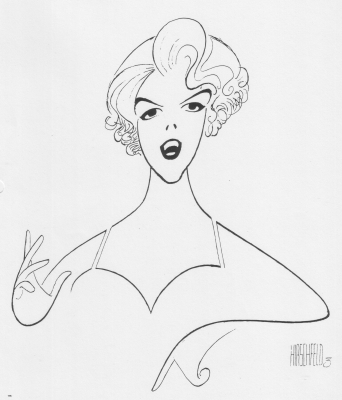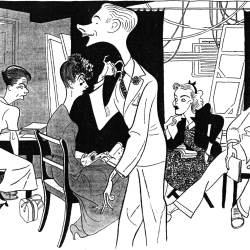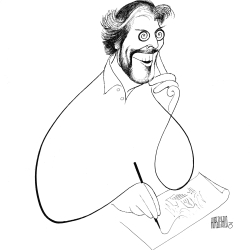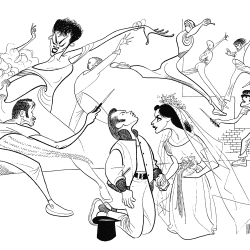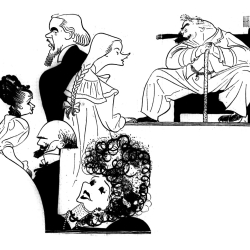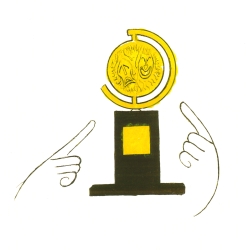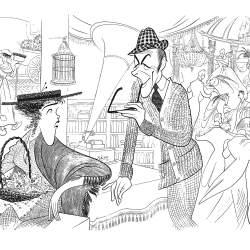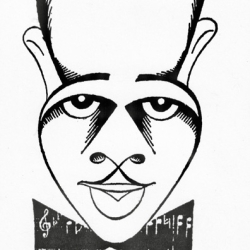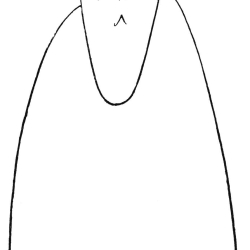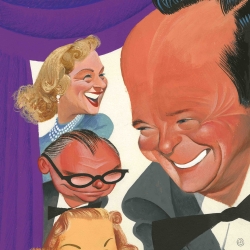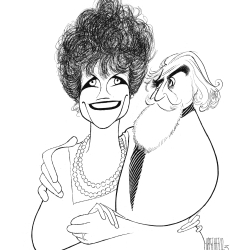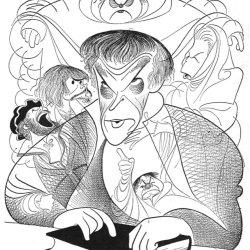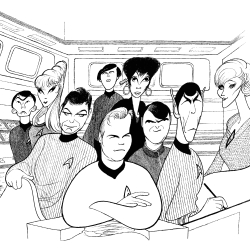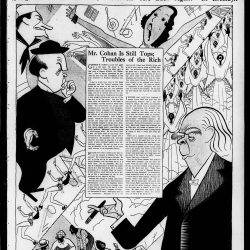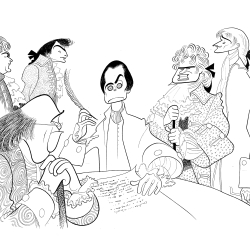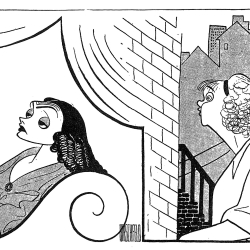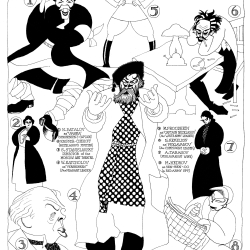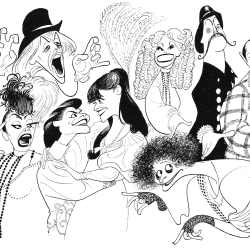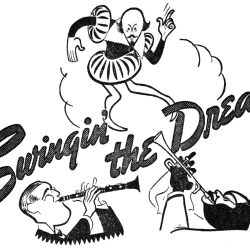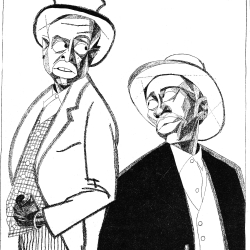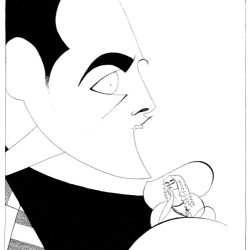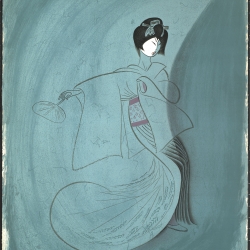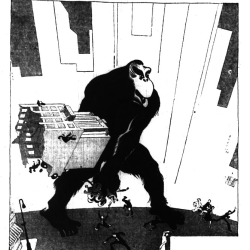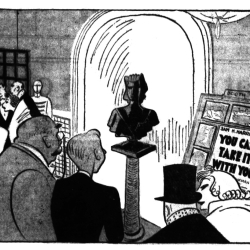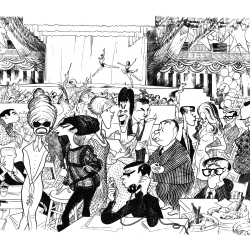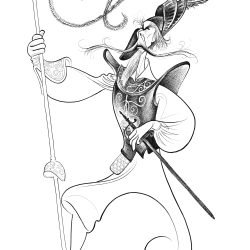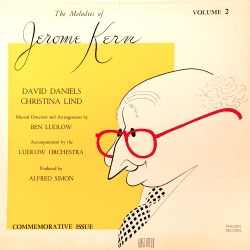Hirschfeld On The Record
“You got your idea of God from where most gay kids get it — the album cover of My Fair Lady. Original cast. It's got this Hirschfeld caricature of George Bernard Shaw up in the clouds, manipulating Rex Harrison and Julie Andrews on strings, like marionettes. It was your parents' album, you were little, you thought it was a picture of God. As, I believe, did Shaw.”
Jeffrey by Paul Rudnick, 1994
There are few place Hirschfeld’s work has not appeared. Rather than confine himself to galleries and museums, Hirschfeld crated art for everything from postage stamps to billboard. Album covers, from 78’s to compact disks, are a rich vein of Hirschfeld art. Hirschfeld recorded music like no LP, tape, or MP3 ever has. From Aerosmith to Pinchas Zuckerman, Hirschfeld has played with them all.
In the 1930s, record companies began to issue collections of records – literally bound albums of ten to twelve record sleeves — by a performer or a type of music. The covers were the first American album art, and not surprisingly, when Porgy and Bess was released on multi-78's, Hirschfeld was commissioned to draw the "album" cover.
By 1938, Columbia Records hired Alex Steinweiss as its art director and he made it a practice to have a cover designed for every release, replacing plain covers. Other companies followed his lead, and by the late 1940s, albums for all the major companies featured their own colorful paper covers in both 10-inch and 12-inch sizes. Some featured reproductions of classic art while others utilized original designs. As cast albums became more common, Hirschfeld’s art was often re-purposed for album releases. By the 1950s, when sales of LPs mushroomed, Hirschfeld was receiving regular commissions for original cover art.
Along with major label releases Hirschfeld did a series of cover for Walden Records in Fifties. Walden was devoted to recording lesser-known songs written by the major songwriters of American Popular Song in contemporary small-band jazz arrangements. Founder Edward Jablonski, who would become a biographer of many of the same composers, turned to Hirschfeld for iconic covers of Cole Porter, Rodgers & Hart, Harold Arlen, Ira Gershwin, Jerome Kern, and Arthur Schwartz. For Caedmon, Hirschfeld drew covers for spoken word releases such as Ogden Nash Reads (1953), and concept projects like MGM's Kaye Ballard‘s The Fanny Brice Story in Song (1958).
The Sixties saw covers for such diverse releases as Don Knotts’ An Evening With Me (1961) to the soundtrack cover of Dr. Doolittle (1967) to a cover for jazz harmonica player Toots Thielemans. He also began a long association with RCA, producing a string of covers for Arthur Fiedler and the Boston Pops on various themes. When these albums were reissued thirty years later, Hirschfeld was commissioned for a whole new series of images.
If Hirschfeld was not responsible for some of the classic rock album covers in the Sixties, in the Seventies, he created one of rock and roll’s most enduring album images for Aerosmith’s Draw the Line (1977). Hirschfeld visited the group while they were recording in Bearsville, New York. Band members liked the drawing so much, that Hirschfeld was commissioned to draw a duplicate of the first to avert a rift between two of the musicians who wanted the first work.
Herschel Bernardi’s Show Stopper (1970) featured a tablecloth that Hirschfeld had sketched a likeness of the singer in and out of his costume in Fiddler On The Roof. There were also iconic images of violinists Jascha Heifetz (1971) and Isaac Stern (1979). Trumpeter Donald Byrd’s Caricatures album wisely featured a Hirschfeld of the musician at work.
Hirschfelds of the Gershwins continued to make album cover appearances in Seventies, Eighties and Nineties: Bobby Short Is K-RA-ZY For Gershwin (1973), Michael Tilson Thomas’ Rhapsody in Blue (1976), Nice Work If You Can Get It (1983) with the Gershwins, Ella Fitzgerald, and Andre Previn. For a Smithsonian exhibition and album release on American Popular Song in 1983, Hirschfeld drew a portrait of 13 great songwriters including the Gershwins, Ellington, Arlen, Johnny Mercer, and Dorothy Fields. There was a companion portrait of seven great singers of the genre including Judy Garland, Tony Bennett, Bing Crosby and Nat King Cole. Of course, contemporary interpreters of the Great American Songbook such as Michael Feinstein (1986) and Steve Ross (1993) also had albums with Hirschfeld covers.
In 1991, he began a ten-year relationship with BMG for a series of 85 covers of classical composers, jazz musicians and composers, Arthur Fiedler, and vocalists such as Rosemary Clooney, Lena Horne and Frank Sinatra.
New releases continue to feature new Hirschfeld artwork. For 2010’s Bing Crosby Sings the Great American Songbook, designer Geoff Gans took a panel of Hirschfeld’s four-part mural of American Musical Theatre, added a few other similar portraits and an older drawing of Crosby for a striking design that the artist would have been proud of.
Please feel free to send a snapshot of any Hirschfeld covers that you find to info@alhirschfeldfoundation.org.
